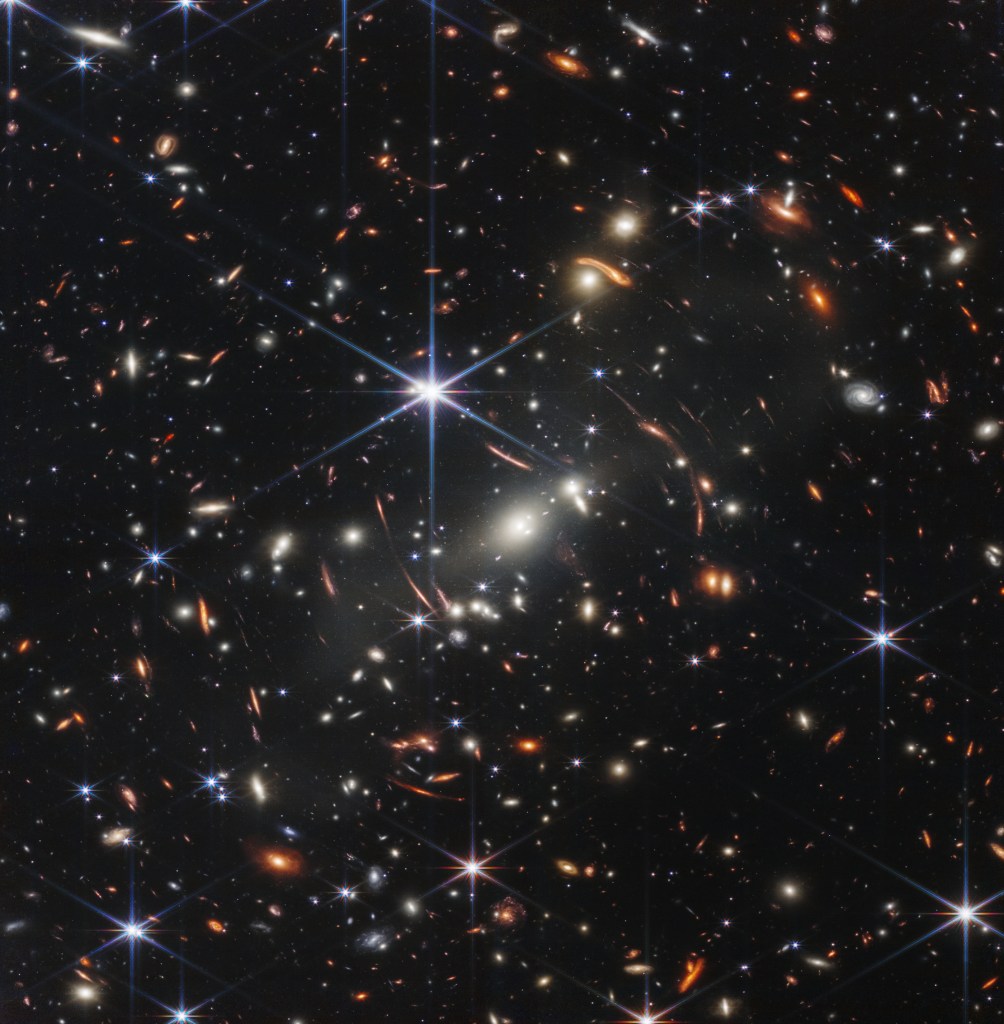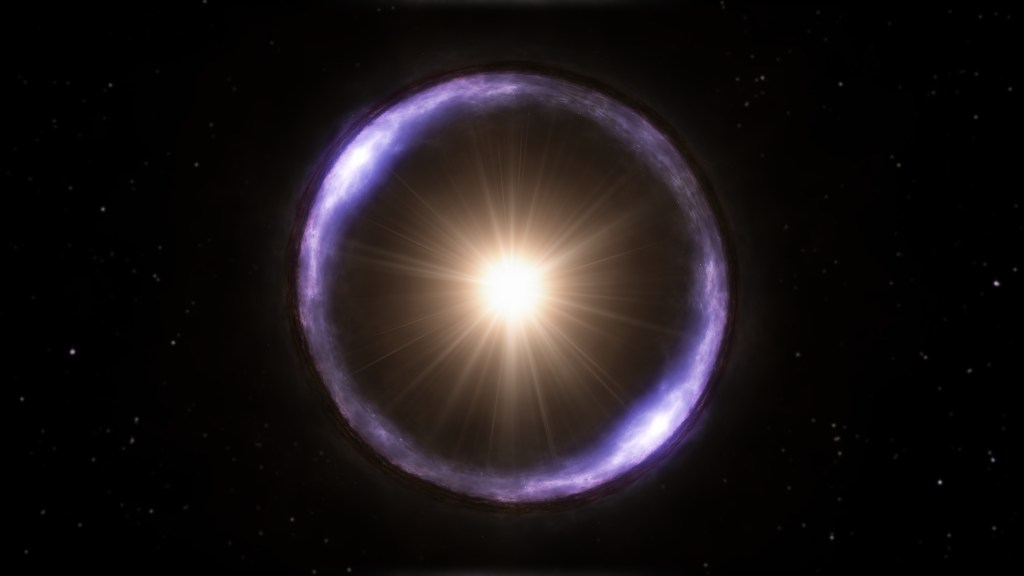Nine billion light years is a practically unfathomable distance, but astronomers have managed to peer across this vast expanse of spacetime to capture images of a single “normal” star (meaning that it is not currently going through a supernova).
This far-flung star, nicknamed “Icarus” though it is officially called MACS J1149 Lensed Star 1, is the most distant non-exploding star ever observed by humans, according to new research published Monday in Nature Astronomy. The paper’s first author, University of Minnesota astronomer Patrick Kelly, said in a statement the star is “at least 100 times farther away than the next individual star we can study, except for supernova explosions.”
Videos by VICE

How did Kelly and his co-authors manage to witness such a remote singular object? The universe did them a solid by providing the cosmic alignment necessary for gravitational lensing, an extremely useful phenomenon for astronomers.
Lensing occurs when a large object, such as a giant star or galaxy cluster, passes in front of more distant background objects, from our point of view on Earth. When this occurs, it’s possible for the light emitted by background objects to be magnified by the foreground objects’ intense gravitational field, giving astronomers a rare glimpse of normally unobservable stretches of the universe.
In this record-breaking example, Icarus happened to be located behind a galaxy cluster called MACS J1149+2223, which is five billion light years from Earth. This cluster has been recognized as a productive cosmic telescope for many years, but it normally only amplifies the light of background objects by a few dozen times.
However, Kelly’s team discovered that Icarus was magnified about 2,000 times, suggesting that a smaller object—perhaps around the size of the Sun—gave it an additional lensing assist. This allowed the astronomers to study the star in fine detail, determining that it is a B-type blue supergiant, many times more massive and radiant than the yellow dwarf star at the center of our own solar system.
Over email, Kelly told me that even more distant stars than Icarus could, in principle, be imaged in future studies. It is possible that some of them may be amplified as much as 10,000 times. The James Webb Space Telescope (JWST), a sophisticated observatory that has been in development for decades at NASA and is currently slated for a 2020 launch, would play an essential role in pinpointing these astronomical extreme close-ups.
“The rate at which background stars should become highly magnified can be calculated with new code that we developed, and with sensitive observations with JWST we should be able to observe the events regularly,” he said.
These “high redshift” stars, which is a term referring to the Doppler-driven optical properties of distant objects as they recede from Earth, are a goldmine of information about the early universe. In fact, Kelly’s paper is being released in tandem with another Nature Astronomy study, led by University of South Carolina astronomer Steven Rodney, that analyzes background transient events magnified by gravitational lensing. Future research may produce images of stars and objects located farther back in space and time, allowing astronomers to watch the exotic early stages of the universe unfold.
“Even higher magnifications would allow us to learn details about Icarus and the population of luminous stars at high redshift,” Kelly told me. “We could, for example, measure how quickly they are rotating, how massive they are, and how much ionizing radiation each produces.”
“At the moment, the study of the high-redshift universe is limited to trying to interpret the combined light of many thousands of stars at once, which is difficult,” he added. “If we do observe events with very high magnification, that would also place extremely strong limits on the fraction of dark matter in the form of primordial black holes.”
Astronomers are harnessing the advanced techniques necessary to gaze across enormous stretches of time and space. Icarus is just the latest tantalizing example of the hidden gems that can be brought into focus with the help of gravitational lenses.
This article originally appeared on Motherboard.




